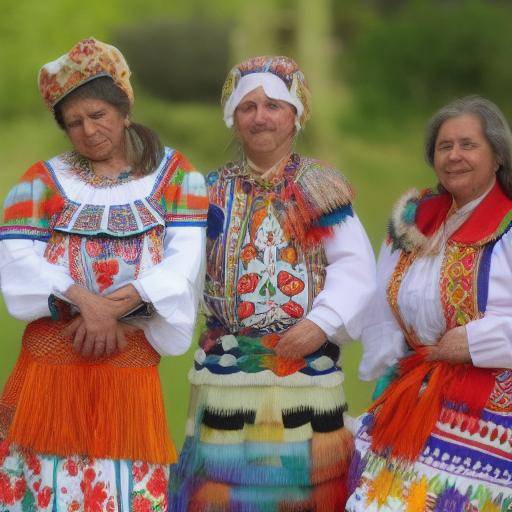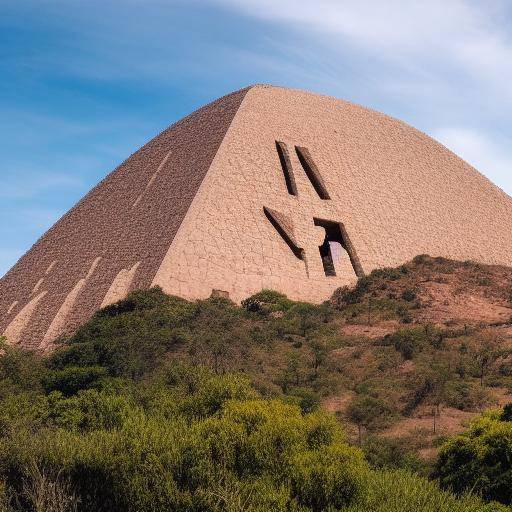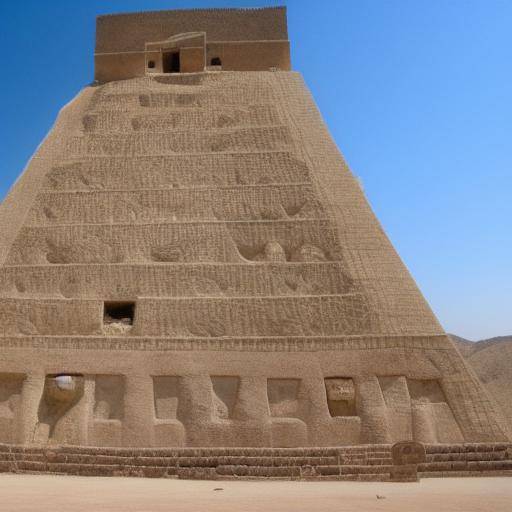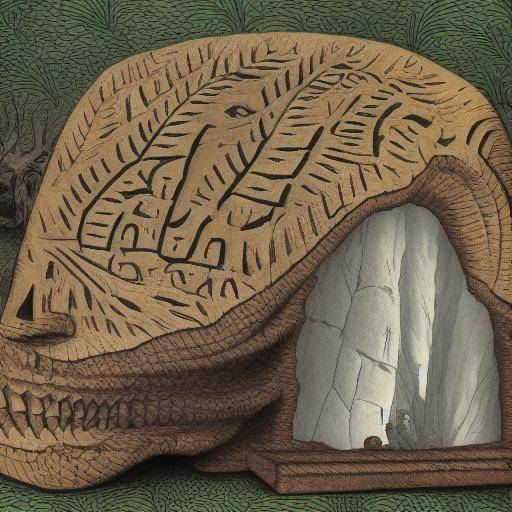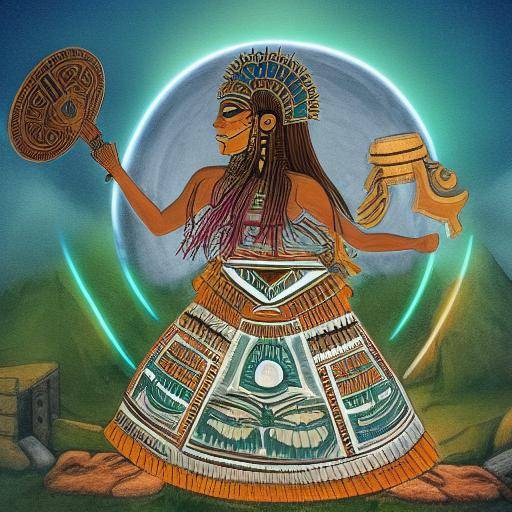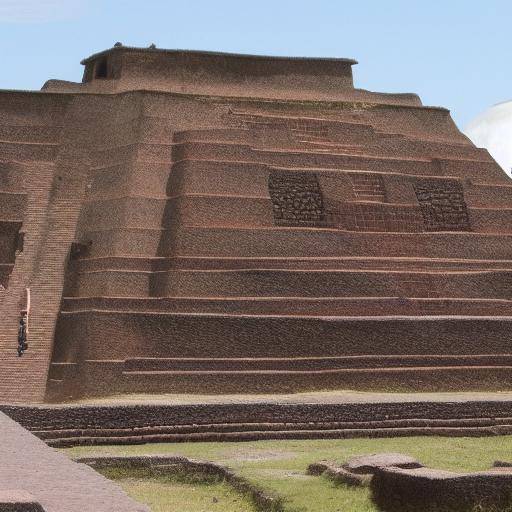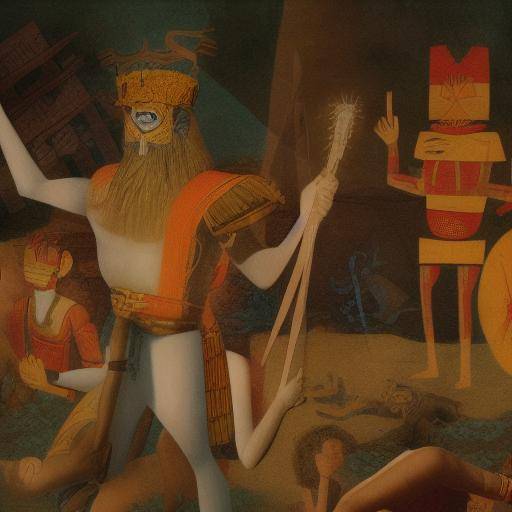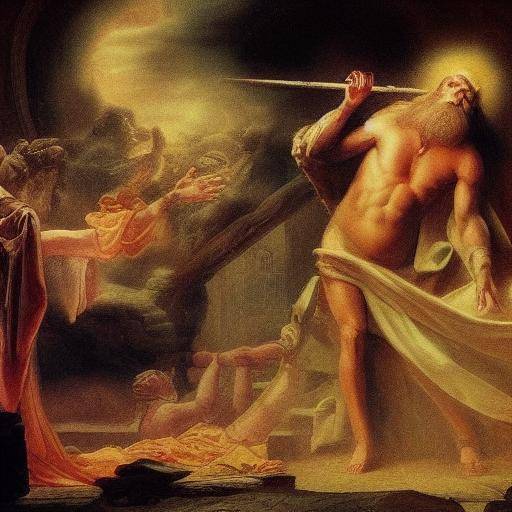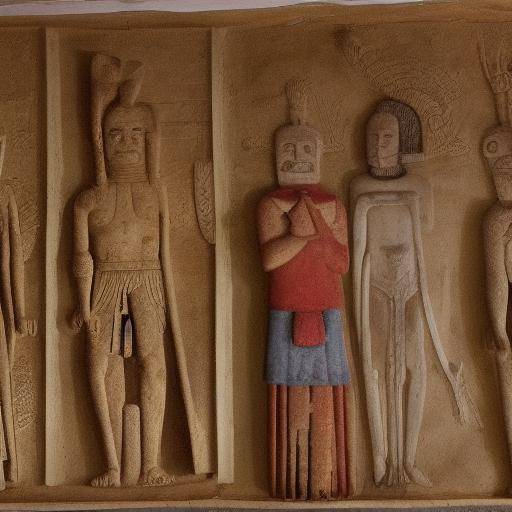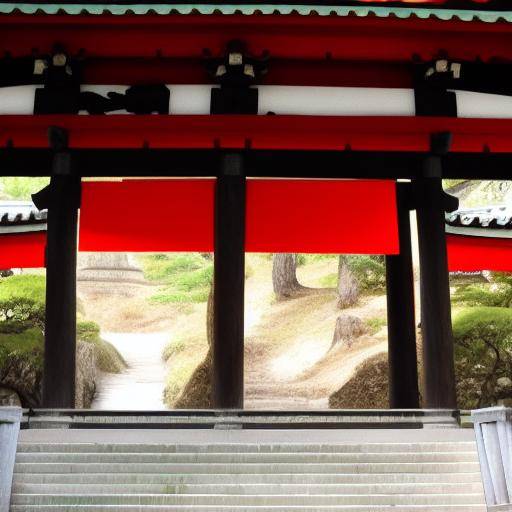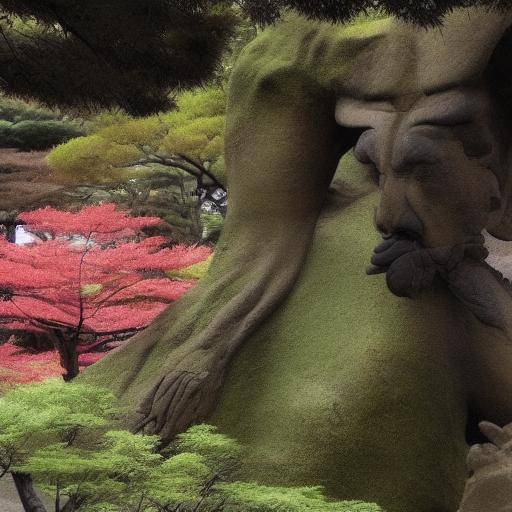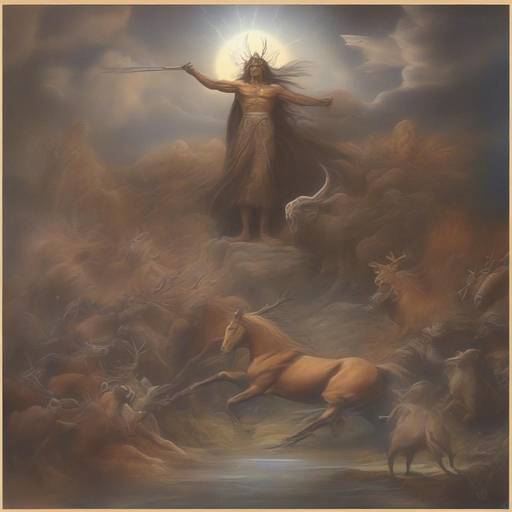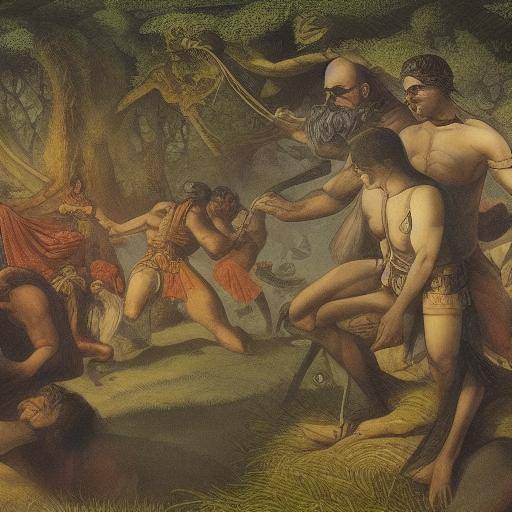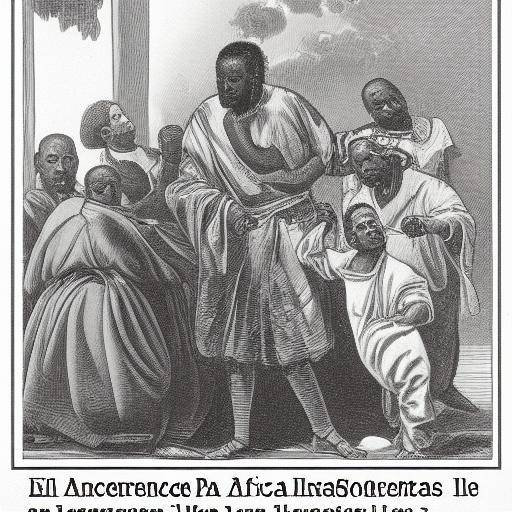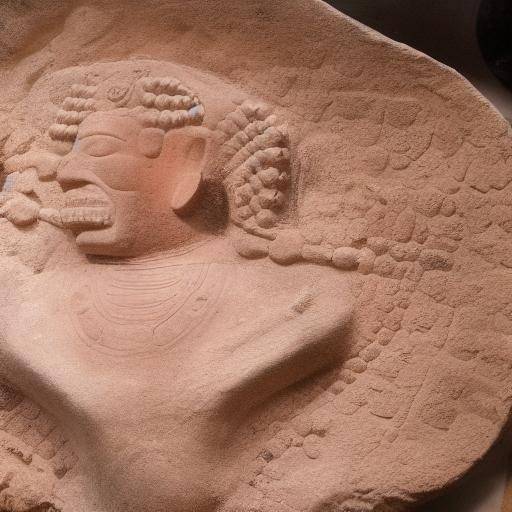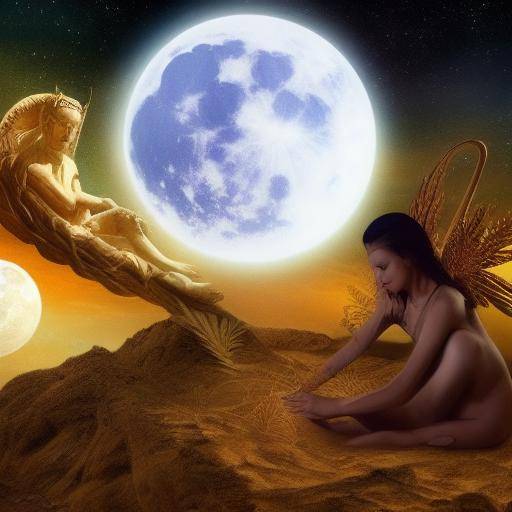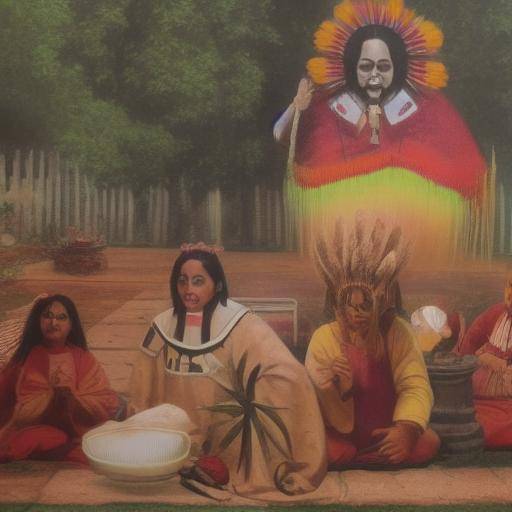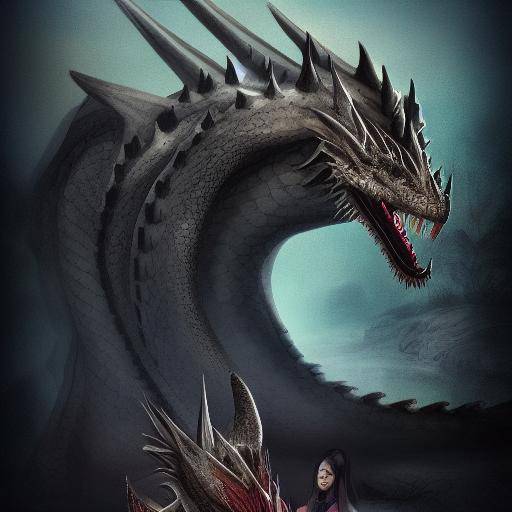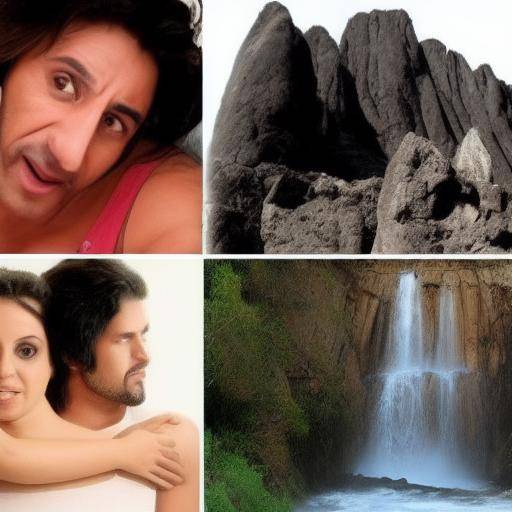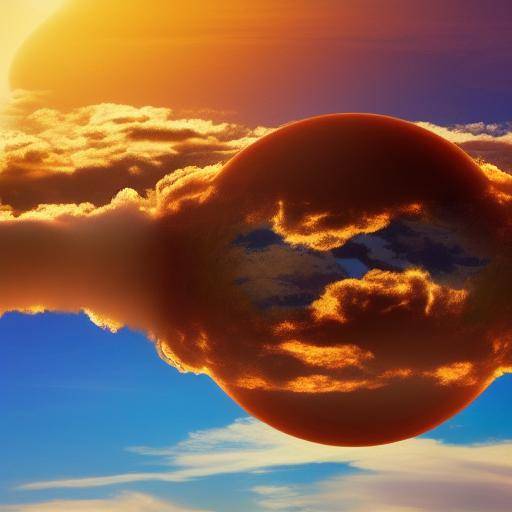
Introduction
Ancient Egypt is recognized for its rich cultural and mythological legacy, where beliefs in heaven and earth played a central role in everyday life and myths that shaped its vision of the universe. This article will explore the intriguing relationship between heaven and earth in Egyptian myths, offering a deep insight into the beliefs and practices of this fascinating civilization. From the cosmogony to the interactions between the gods and human beings, we will immerse ourselves in a mythological universe that connects the earthly to the divine.
History and Background
The Egyptian pantheon, rooted in the worldview of ancient society, reflects the intrinsic relationship between heaven and earth. From the cosmogenic mythology that narrates the birth of the gods to the interactions between the earthly world and the divine, each aspect of Egyptian life was impregnated with this duality. The Egyptian myths explore the interconnection between heaven, personified in deities such as Nut, the goddess of heaven, and Geb, the god of the earth, whose union represented fertility and renewal.
The worship of the solar gods like Ra and Horus evidences reverence to heaven as a source of light, life and order, while the earth was perceived as a fruitful receptacle, capable of sheltering life and sustaining existence. This profound interrelation between heaven and earth is reflected in funeral rituals, in which an individual's harmonious transition to the beyond was sought, symbolizing the union between heaven and earth in Egyptian cosmogony.
Analysis in Deep
The symbolism of heaven and earth in the Egyptian myths transcends the mere worship of divine entities; it represents a refined understanding of nature, time and destiny. The hieroglyphics and funeral monuments attest to the importance of this relationship, where the gods intertwine with the earthly world, providing mortals the hope of an eternal life under the protection of heaven. The transfiguration of the Pharaohs in deities by dying illustrates the belief in the direct connection between the human and the divine, erasing the limits between heaven and earth.
Exhaustive examination
Egyptian mythology offers valuable lessons on the connection between heaven and earth, transmitting teachings on balance, renewal and permanence. Through myths, it is suggested that the harmony between heaven and earth is essential for prosperity and cosmic order. This conception has endured over the millennia, influencing the worldview of later civilizations and enriching the human understanding of the universe.
Comparative analysis
The relationship between heaven and earth in Egyptian mythology shares similarities and contrasts with the beliefs of other ancient cultures, enriching our appreciation of the diversity of mythical conceptions in human history. While in Greek mythology, for example, the Olympic gods dominated the heavens and the earth, in Egypt, deities took more specific roles, embodying natural forces and everyday aspects of human existence. These divergences reveal the richness and complexity of mythological narratives in different cultural contexts.
Practical Tips and Accessible Recommendations
To fully understand the relationship between heaven and earth in Egyptian myths, it is advisable to explore primary and secondary sources that address mythology, religious practices and archaeological findings related to this temtica. The works of renowned Egyptians such as Jan Assmann, Erik Hornung and Zahi Hawass provide a specialized and accessible perspective on this subject, providing a deeper insight into the beliefs and practices of ancient Egyptian civilization.
Industry Visions and Expert Reviews
Contemporary scholars continue to deepen the complex relationship between heaven and earth in Egyptian myths, offering new interpretations and innovative approaches. Archaeological research, analysis of ancient texts and emerging technologies are expanding our knowledge, shedding light on previously obscured aspects of Egyptian mythology. These contemporary perspectives provide a wealth of nuances, enriching the understanding of the interconnections between heaven, earth and the divine in ancient Egyptian civilization.
Case Studies and Real Life Applications
Egyptian myths continue to exert a lasting influence on art, literature and popular culture, demonstrating the perpetual fascination with the beliefs and accounts of this ancient civilization. From the visual recreation of mythological scenes in artistic works to the contemporary reinterpretation of Egyptian deities in literature and cinema, the imprint of Egyptian mythology is manifested in many spheres. These cases represent the validity of Egyptian mythical narratives in creative expression and human imagination over time.
Future Trends and Predictions
As archaeological research and academic analysis continue to reveal new aspects of Egyptian myths, it is plausible to expect multidisciplinary approaches to incorporate archaeological findings, linguistic research and comparative analysis with other ancient mythologies. In turn, the influence of Egyptian myths on contemporary culture will remain a fertile field for creative exploration, generating new ways to reinterpret and appreciate these ancient stories.
Conclusion
The relationship between heaven and earth in the Egyptian myths is revealed as a subject of profound meaning, transcendi
Frequently asked questions
1. What is the role of the Egyptian gods in the relationship between heaven and earth?
Egyptian mythology presents a complex network of deities that personify aspects of the universe, from heaven to earth and beyond. The gods like Nut, Geb, Ra and Horus play fundamental roles in the connection between heaven and earth, symbolizing natural forces, cosmic cycles and the interdependence between the divine and the earthly.
2. How is the relationship between heaven and earth reflected in the daily life of ancient Egypt?
The relationship between heaven and earth permeated all aspects of Egyptian life, from funeral rituals to beliefs in the fertility of the earth and the influence of the stars in agriculture. This interconnection was reflected in religious practices, social organization and the vision of the universe as a coherent whole.
3. Are there parallels between Egyptian mythology and other mythological traditions regarding the relationship between heaven and earth?
Yes, there can be similarities and differences between Egyptian conception and other mythological traditions. In many ancient cultures, there are heavenly and earthly deities that represent similar aspects of existence and the cosmos. However, each mythological tradition has distinctive characteristics that make them unique.
4. What is the contemporary impact of Egyptian myths on popular culture?
Egyptian myths continue to exert a significant influence on popular culture, evidenced in films, series, books, video games and works of art that reinterpret and adapt Egyptian mythological narratives and characters. This influence reflects the perdurability and timeless appeal of Egyptian stories, as well as their ability to inspire contemporary creativity and imagination.
5. What are some of the recommended sources for further study of Egyptian myths?
In addition to the works of egyptologists recognized as Jan Assmann, Erik Hornung and Zahi Hawass, it is recommended to explore primary sources such as the Book of Dead and mythological texts such as the "History of Gods and Heroes" of Plutarco. These sources provide a direct view of the beliefs and accounts of ancient Egyptian civilization.
6. How have Egyptian myths influenced other areas of contemporary knowledge and culture?
Egyptian myths have influenced not only popular culture, but also academic disciplines such as archaeology, art history, comparative literature and theology. His legacy continues to generate interdisciplinary research that seeks to understand not only Egyptian beliefs and practices, but also its impact on the evolution of civilizations and the human perception of the world.
In conclusion, the relationship between heaven and earth in Egyptian myths is a multidimensional theme that transcends the religious sphere, encompassing cosmological, social, artistic and cultural aspects. The study of this relationship reveals a worldview in which the heavenly and the earthly are intertwined in a cosmic ballet, giving meaning and coherence to human existence in ancient Egypt. Exploring these myths provides a unique window to an ancestral civilization and its perspective of the universe, enriching our understanding of the diversity and wealth of human experience over time.
With this dive into the fascinating Egyptian mythology, readers can deepen the understanding of the relationship between heaven and earth, passing through a journey through time and the mythological space of one of the most influential civilizations in history.
The information provided in this article seeks to be a representative synthesis, but it is recommended to delve into specialized sources for an exhaustive understanding of this fascinating topic.



